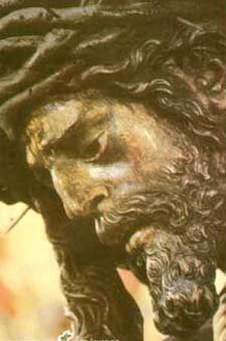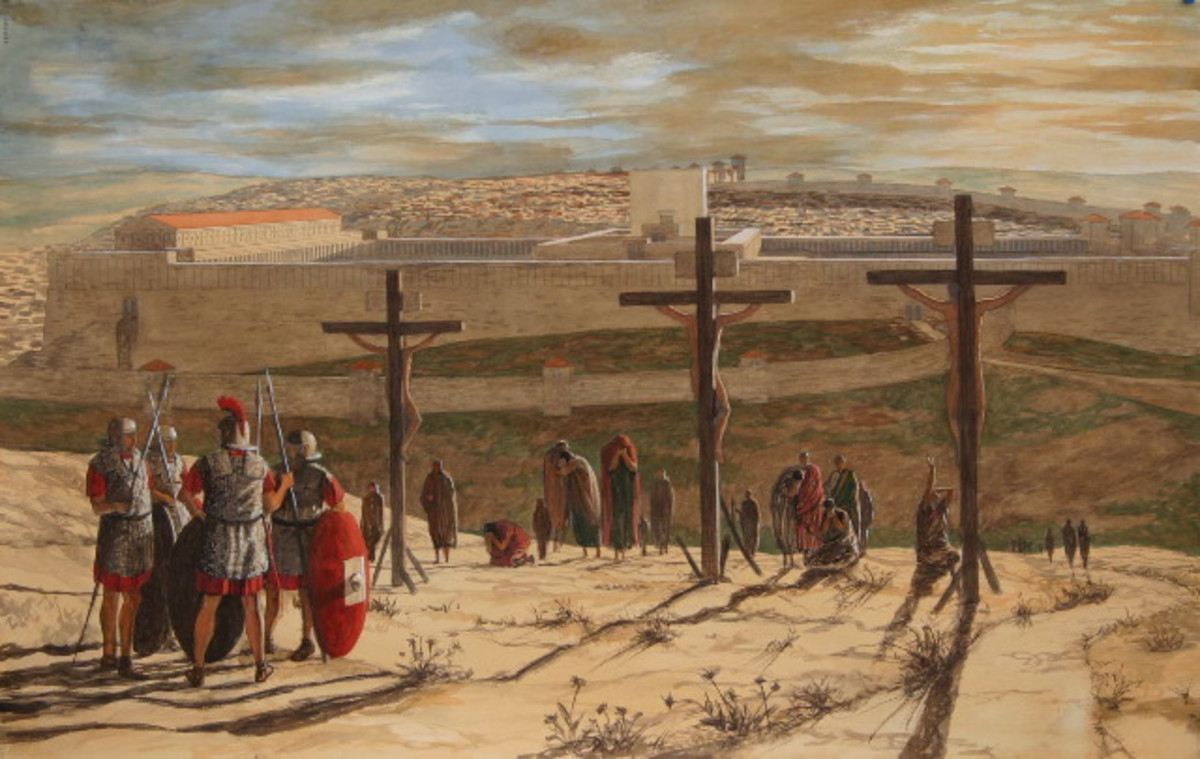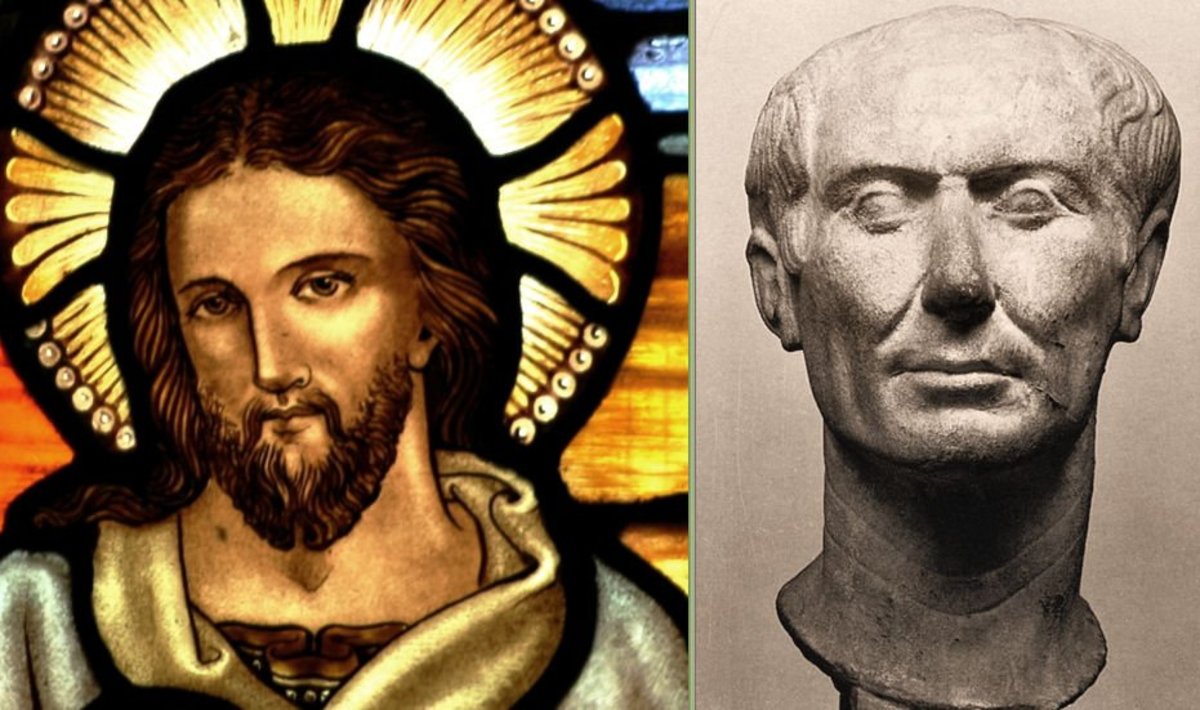Was Jesus Crucified and Why?



Was Christ really Crucified?
The Bible says the destiny of man depends on the truthfulness of the crucifixion of Jesus Christ. In addition, Christians believe the Bible is inspired by God. There are many scriptures supporting literally every prophecy fulfilled in the person of Christ. Notwithstanding, many of which were declared by Christ Himself.
The death of Christ on the cross and His resurrection have been disputed issues between Muslims and Christians throughout history. Many Muslims deny Jesus was crucified, or even died a natural death.
Die for a Lie?
If the death of Christ was only a fabrication, would all the disciples, with the exception of John, have sacrificed their lives for it? The Quran itself testifies to the faithfulness, goodness and devoutness of the disciples, and calls them examples to be followed. Such people would not fabricate a tale about their Master. It's highly unlikely to believe God-fearing men would die for a lie.
Why Was Jesus Crucified?
According to the gospels, Jesus claimed to be the king of the Jews. This was the charge written on the sign at the top of the cross. But the charge was false. His enemies had trumped up the accusation by deliberately misinterpreting the old Jewish prophecies about the coming of the Messiah.
According to those prophesies, the Messiah would appear during a period known as the End Times (or Last Days). He would set up a perfect kingdom on earth, where all righteous people could live forever in peace and joy.
During Jesus' time many believed the End Times had already arrived. This belief was prevalent in Galilee, where Jesus lived. When John the Baptist began proclaiming all the prophecies about the Messiah would soon be fulfilled the belief grew even stronger.
But those prophesies could be interpreted in different ways. Many believed He would be a great military leader who would overthrow the oppressive Roman government. Others saw the Messiah as a non-violent person who would pave the way for the new kingdom by sacrificing himself to pay for humankind's sins.
Because of these beliefs more violent protests and uprisings took place in Palestine than in any other part of their empire. Therefore the Romans were continually watching for possible rebel leaders.




Why did Jesus Decide to Go to Jerusalem?
Jesus at some point decided to go to Jerusalem. Why is not perfectly clear. The gospels suggest He felt compelled to go. The story has Jesus going to Jerusalem at the time of the festival of Passover. Passover is one of the two most important Jewish Holy Days or festivals in the entire year celebrating harvest. It also commemorates the deliverance from slavery in Egypt.
It would be natural for the Romans to become nervous with such large a crowd milling about. The potential for increased political insurrection and uprisings would be much higher.
According to the gospels, Jesus went to the Temple and drove the money changers out. This is clearly the event which brings Him immediately to the attention of the Roman authorities.
All four New Testament Gospels testify Jesus was crucified and died. Some say the evidence is insufficient to verify the story is true. The death and resurrection of Jesus are key doctrines of Christianity. If it never happened, there is no sacrificial death on behalf of our sins as the New Testament teaches, then there is no hope for us. The apostle Paul taught:
"If Christ has not been raised, your faith is worthless" (1 Cor. 15:17 HCSB).
Jesus' execution is reported in a number of ancient sources: Christian and non-Christian. In addition to the four Gospels and a number of letters contained in the New Testament, all of which were written in the first century, Jesus' execution is even reported by a number of ancient non-Christian sources. Josephus (late first century), Tacitus (early second century), Lucian (early to mid second century), and Mara bar Serapion (second to third centuries) all report the event. The fact these non-Christians mentioned Jesus in their writings shows the event was known outside of Christian circles and not something Christians concocted.
A number of ancient sources tell about the viciousness, such as Josephus, a 1st century Jewish historian in. He tells about a person whipped until filleted to the bone. He also wrote about a group of men whipped so savagely their intestines could be seen.
Josephus reports only one person ever surviving a crucifixion. Seeing three of his friends being crucified, Josephus pleaded for the Roman commander Titus to stop the proceedings. All three were removed immediately and provided the best medical care available. Two still died. Thus, even if Jesus had been removed prematurely, which there is no evidence of, His chances at survival were practically nil.
Even most modern day medical professionals agree Jesus would have died by asphyxiation-or lack of oxygen. Our historical understanding of crucifixion supports that conclusion. A number of ancient sources report the practice of breaking legs in conjunction with crucifixion. Breaking the legs would prevent pushing up against the nail in their feet, in order to breathe easier.
Most physicians would agree, due to the trauma already inflicted and death by asphyxiation, after about five minutes, there would be no chance of resuscitation. In addition, the Gospel of John reports one of the guards pierced Jesus with a spear to confirm He was dead.
Even if Jesus had somehow miraculously managed to survive crucifixion, He would not have been able to move the stone from the tomb, much less overcome the guards or walk an untold distance on nail pierced feet.
The historical evidence, some of which recorded by non-Christians, is very strong Jesus died by crucifixion. The fact is Christians openly based their faith on the fact Jesus was publicly tried, condemned, executed, and resurrected. This is what people were saying within weeks following the events. At that time,literally thousands of people could have contested the validity of the story. They could have to the authorities and demanded proofHe had not been crucified. But, no one did. Everyone in Jerusalem knew He had been, and many had been present at the crucifixion. The resurrection may have been questioned, but not the crucifixion.
The apostle Paul, said, “ Christ died for our sins in accordance with the Scriptures... . he was buried . . . he was raised on the third day . . . Then he appeared to more than five hundred brothers at one time, most of whom are still alive” (1 Corinthians 15:3-6).
Christianity was spreading during the very time when eyewitnesses could have most easily proved it false.
Why did Jesus Decide to Go to Jerusalem?
Jesus at some point decided to go to Jerusalem. Why is not perfectly clear. The gospels suggest He felt compelled to go. The story has Jesus going to Jerusalem at the time of the festival of Passover. Passover is one of the two most important Jewish Holy Days or festivals in the entire year celebrating harvest. It also commemorates the deliverance from slavery in Egypt.
It would be natural for the Romans to become nervous with such large a crowd milling about. The potential for increased political insurrection and uprisings would be much higher.
According to the gospels, Jesus went to the Temple and drove the money changers out. This is clearly the event which brings Him immediately to the attention of the Roman authorities.
All four New Testament Gospels testify Jesus was crucified and died. Some say the evidence is insufficient to verify the story is true. The death and resurrection of Jesus are key doctrines of Christianity. If it never happened, there is no sacrificial death on behalf of our sins as the New Testament teaches, then there is no hope for us. The apostle Paul taught:
"If Christ has not been raised, your faith is worthless" (1 Cor. 15:17 HCSB).
Jesus' execution is reported in a number of ancient sources: Christian and non-Christian. In addition to the four Gospels and a number of letters contained in the New Testament, all of which were written in the first century, Jesus' execution is even reported by a number of ancient non-Christian sources. Josephus (late first century), Tacitus (early second century), Lucian (early to mid second century), and Mara bar Serapion (second to third centuries) all report the event. The fact these non-Christians mentioned Jesus in their writings shows the event was known outside of Christian circles and not something Christians concocted.
A number of ancient sources tell about the viciousness, such as Josephus, a 1st century Jewish historian in. He tells about a person whipped until filleted to the bone. He also wrote about a group of men whipped so savagely their intestines could be seen.
Josephus reportsonly one person ever surviving a crucifixion. Seeing three of his friends being crucified, Josephus pleaded to the Roman commander Titus to stop the proceedings. All three were removed immediately and provided the best medical care available. Two still died. Thus, even if Jesus had been removed prematurely, which there is no evidence of, His chances at survival were practically nil.
Even most modern day medical professionals agree Jesus would have died by asphyxiation-or lack of oxygen. Our historical understanding of crucifixion supports that conclusion. A number of ancient sources report the practice of breaking legs in conjunction with crucifixion. Breaking the legs would prevent pushing up against the nail in their feet, in order to breathe easier.
Most physicians would agree, due to the trauma already inflicted and death by asphyxiation, after about five minutes, there would be no chance of resuscitation. In addition, the Gospel of John reports one of the guards pierced Jesus with a spear to confirm He was dead.
Even if Jesus had somehow miraculously managed to survive crucifixion, He would not have been able to move the stone from the tomb, much less overcome the guards or walk an untold distance on nail pierced feet.
The historical evidence, some of which recorded by non-Christians, is very strong Jesus died by crucifixion. The fact is Christians openly based their faith on the fact Jesus was publicly tried, condemned, executed, and resurrected. This is what people were saying within weeks following the events. At that time,literally thousands of people could have contested the validity of the story. They could have to the authorities and demanded proof He had not been crucified. But, no one did. Everyone in Jerusalem knew He had been, and many had been present at the crucifixion. The resurrection may have been questioned, but not the crucifixion.
The apostle Paul, said, “ Christ died for our sins in accordance with the Scriptures... . he was buried . . . he was raised on the third day . . . Then he appeared to more than five hundred brothers at one time, most of whom are still alive” (1 Corinthians 15:3-6).
Christianity was spreading during the very time when eyewitnesses could have most easily proved it false.







